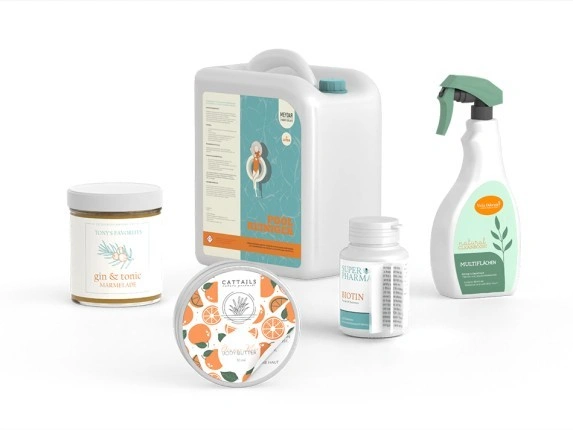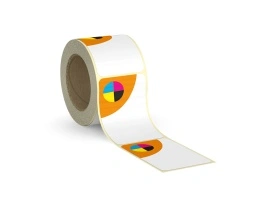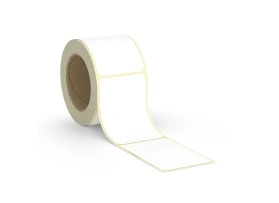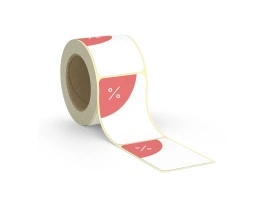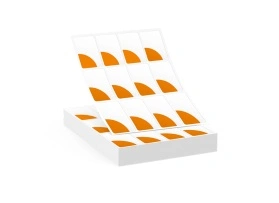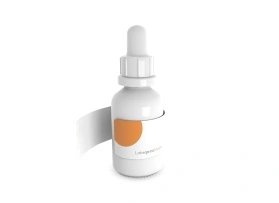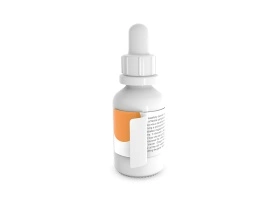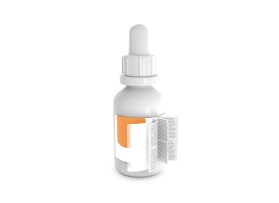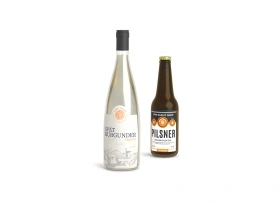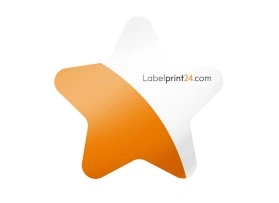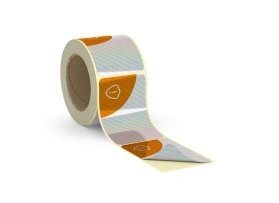Adhesive labels
Are you looking for an Adhesive label that is perfect for every application and purpose? Adhesive labels in a wide variety of designs? Order Adhesive labels from Labelprint24.com!
- Perfect adhesion on various substrates
- Indoor and outdoor thanks to the right materials
- First-class print and processing quality
Discover the wide range of labels from Labelprint24.com!
- Production TimeFrom 48hr
- MaterialFilm / Paper
- Size100% customizable
- Finish OptionsFilm / Varnish
Select kind of product
Adhesive labels, also called sticky labels, are a hidden everyday companion. They can be found almost everywhere. Immediately after getting up, one is already in contact with the first self-adhesive label; it sticks to the clock radio and informs about the manufacturer and the serial number. In the bathroom, adhesive labels in various shapes and colours can be found on all kinds of tubes, jars and tins. It goes on like this all day: everywhere you go, products and objects are marked with adhesive labels. But why not? It doesn't get much more practical than adhesive labels.


Invented in the USA in 1930, adhesive labels have since enjoyed success across industries and countries. In their original form, adhesive labels were produced in sheet format, and since 1960 also in roll format. This made processing the labels much easier. The storage on rolls allows machine processing, so that a very large quantity of products can be provided with the adhesive labels within a short time.
Discover our entire label range here
What are adhesive labels?
Adhesive labels are, as the name suggests, labels that stick by themselves without the addition of adhesive. Their main material is paper or foil with a coating. On the reverse side there is an adhesive layer, which is permanently adhesive or removable, depending on the intended use. They are supplied on a backing paper from which they can be easily removed.
Today, most labels are self-adhesive. Non-adhesive labels are divided into non-gummed label paper and dry-gummed label paper. Non-gummed labels are simply ordinary paper or other material without adhesive. They are coated with wet glue before labelling and then applied to the product. Dry gummed paper is coated with a dry adhesive that becomes tacky when exposed to moisture. A well-known example of dry gummed labels are stamps.
How are adhesive labels made?
In the first step, the material for the adhesive labels is produced and wound onto large rolls. In the label printing shop, the paper or film rolls are fed into the printing machine and unrolled. They are then printed using various processes. After the self-adhesive label has been printed, the label shape is punched into the label material. Finally, the edges are peeled off. What remains is the finished label on the backing paper.
At Labelprint24 we use the digital printing process to print the labels. Digital printing is particularly well suited for small and medium runs and is advantageous over other printing techniques such as offset or flexo printing. Digital printing offers the possibility to print each label individually without much effort. In addition, the printing of the labels has a high quality and colour fastness. This article explains all the advantages of digital printing in detail. To ensure that the adhesive labels you order have the desired print quality, you should familiarise yourself with the necessary DPI requirements.
Another option for printing labels are the thermal processes. If you want to use the thermal transfer method, any material can be used. However, a special thermal transfer ribbon is also required. When using the direct thermal method, special label material is required, but no transfer ribbon.
What materials are used?
Adhesive labels are made of either paper or film. Different label materials have different properties and offer different advantages. Mostly, adhesive labels made of paper are cheaper than film labels. In addition, the printing ink can adhere better to paper thanks to its rough surface. But adhesive labels made of film also offer advantages. They are weather-resistant and more robust against environmental influences. Thanks to special coatings, printing on film labels is also of high quality. Special coatings ensure colour fastness and good adhesion of the printing inks. For more information on paper and film labels and the different types of film for adhesive labels, see our blog article Label printing on film and paper.
The adhesive of the self-adhesive labels is what turns a simple label into a self-adhesive label. It is an important and integral part of every self-adhesive label. Different adhesives are used depending on the subsequent use and the type of label. For labels that need to adhere to rough surfaces, adhesives made of rubber materials are suitable. Rubber adhesives are very viscous, they penetrate porous surfaces and ensure good adhesion there. Acrylic-based adhesives are suitable for smooth surfaces, as they become very hard and thus do not run out next to the label even on smooth surfaces.
Where are adhesive labels used?
As already described, adhesive labels are used in many different areas. Depending on the application scenario, the adhesive labels have different properties. They are waterproof, They are waterproof, heat or cold-resistant or can withstand strong sunlight. These are some of the properties of the self-adhesive labels that you can select in the calculator on our site before making a purchase.
Adhesive labels are used in both the consumer and industrial goods sectors. Adhesive labels are often used as product identification. They contain information about the product such as ingredients, intended use, application instructions or further information. Thanks to their self-adhesive property, adhesive labels can be easily applied to the various products and serve as information long after the time of purchase. Typical applications of adhesive labels are the use as cosmetic labels, industrial labels, chemical labels, food labels or many more.
Special forms of adhesive labels
Security labels are a special form of adhesive labels. In addition to the labelling function, they offer an additional protective function. Safety labels are self-destructing and, thanks to special, strong adhesives, can only be removed with residues. They are used when the integrity of the marked products must be guaranteed. Self-adhesive Safety labels are an ideal protection against tampering, as it is immediately obvious if someone has tried to destroy or remove the label.

A weak point of adhesive labels is the waste production that comes with them. The problem is the backing material. Every year, 7 million square metres of waste are produced from the backing material of adhesive labels, which is equivalent to 10,000 truck loads. The production costs of the carriers amount to € 1.2 billion annually. Thus, adhesive labels have considerable economic and ecological disadvantages. These can be at least partially prevented, for example by using linerless labels.
Linerless labels offer a sensible alternative to conventional adhesive labels on backing paper in many cases. Instead of liner paper, linerless labels are simply rolled up on the roll without a liner. They have an additional silicone layer on the top, which prevents the labels from sticking together.

In addition to the advantages already mentioned, linerless labels have further advantages. The linerless labels require less space on the label roll than conventional adhesive labels. Thus, fewer and lighter label rolls have to be stored and transported for the same quantity of labels. This saves costs and protects the environment. In addition, linerless labels have faster dispensing speeds during machine processing than labels on liner. One disadvantage of linerless labels is that so far they can only be produced on rolls and in rectangular form. The individual labels can be separated from each other by perforation.
Adhesive variants of the adhesive labels
Depending on the application, adhesive labels should have different adhesive properties. There are permanently adhesive, removable and removable labels. Permanently adhesive labels stick permanently to the product and are not intended to be removed. Removable labels, as the name suggests, are removed from the product. Removal should occur without adhesive residue, so the adhesive on the label must be dosed appropriately. Redetachable labels are adhesive labels that can be repeatedly removed and reapplied.
Machine processing means that the adhesive labels do not have to be applied laboriously by hand, but can be applied very quickly and efficiently by machine. To be suitable for machine processing, the adhesive labels must meet certain requirements. The distance between the individual labels on the liner must be consistent. Bleeding of the adhesive must be avoided at all costs, as otherwise the machine can become soiled and thus damaged. The release factor of the adhesive labels is particularly important for machine processing. It determines when a label detaches from its backing. For machine processing, the release factor must be selected so that the self-adhesive label detaches at exactly the right moment. It must be avoided that it already detaches from the roll before it is applied to the product. The release factor is influenced by the choice and dosage of the adhesive. Within a label, especially with multi-layer labels, there can be different release factors, i.e. adhesive dosages.



